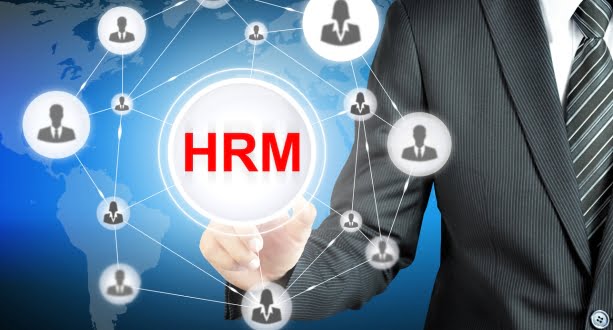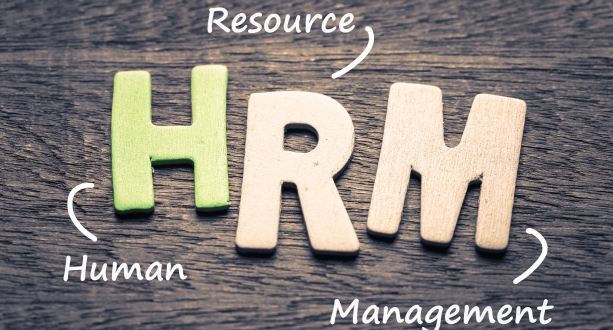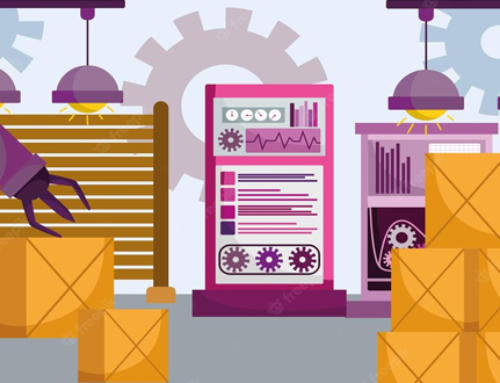Introduction to HRM Web Applications

What are HRM Web Applications?
HRM web applications are software solutions designed to automate and optimize various HR functions, processes, and tasks within an organization. Unlike traditional HR systems that relied on manual intervention and paperwork, these web-based platforms leverage cloud computing and internet technologies to deliver seamless, centralized HR management.
Evolution of HRM Technology
The evolution of HRM technology can be traced back to the emergence of early HR information systems (HRIS) in the 1980s. These systems primarily focused on automating basic HR functions such as payroll processing and employee record-keeping. Over the years, advancements in technology led to the development of more sophisticated HRM solutions, including integrated HRIS, talent management systems, and HR analytics tools.
With the advent of the internet and cloud computing in the late 20th century, HRM technology underwent a significant transformation. Web-based HRM applications emerged, offering anytime, anywhere access to HR data and functionalities. This shift marked the beginning of a new era in HR management, characterized by greater connectivity, flexibility, and scalability.
Core Components and Features
HRM web applications typically encompass a wide range of features and functionalities tailored to meet the diverse needs of modern organizations.
- Employee Self-Service (ESS): Allows employees to access and manage their personal information, benefits, and performance records online, reducing administrative overhead for HR personnel.
- Recruitment and Onboarding: Streamlines the recruitment process by automating job postings, applicant tracking, resume screening, and onboarding procedures, leading to faster hiring cycles and improved candidate experience.
- Performance Management: Facilitates goal setting, performance evaluations, feedback collection, and competency assessments, enabling organizations to foster a culture of continuous improvement and employee development.
- Time and Attendance Tracking: Tracks employee attendance, leave requests, and work hours accurately, helping organizations monitor workforce productivity, enforce compliance, and manage payroll efficiently.
- Learning Management: Provides online training modules, skill assessments, and certification tracking to support employee learning and development initiatives, enhancing workforce skills and competencies.
- Analytics and Reporting: Offers robust analytics tools and customizable reporting dashboards to analyze HR metrics, trends, and insights, empowering decision-makers to make data-driven HR strategies and decisions.
Types of HRM Web Applications

- Integrated HRIS: All-in-one solutions that combine core HR functions such as payroll, benefits administration, and personnel tracking into a single platform.
- Talent Management Systems: Specialized platforms designed to manage recruitment, performance, learning, and succession planning activities to attract, develop, and retain top talent.
- Employee Engagement Platforms: Tools focused on enhancing employee satisfaction, collaboration, and communication through features like surveys, feedback mechanisms, and social networking.
- HR Analytics Solutions: Advanced analytics platforms that leverage big data and predictive analytics to derive actionable insights into workforce trends, performance drivers, and future HR requirements.
Importance of HRM Web Applications in Modern Businesses

In today’s highly competitive business environment, the effective management of human capital is paramount to organizational success. HRM web applications play a crucial role in enabling businesses to:
- Enhance Efficiency and Productivity: By automating repetitive tasks and streamlining HR processes, web-based HRM solutions enable HR professionals to focus on strategic initiatives that drive business growth and innovation.
- Improve Employee Experience: Through self-service portals, mobile access, and intuitive interfaces, HRM web applications empower employees to take control of their HR-related activities, leading to higher satisfaction and engagement levels.
- Facilitate Data-Driven Decision-Making: By centralizing HR data and providing powerful analytics tools, web-based HRM platforms enable organizations to gain deeper insights into workforce dynamics, performance trends, and areas for improvement, facilitating informed decision-making.
- Ensure Compliance and Risk Management: With built-in compliance features and regulatory updates, HRM web applications help organizations stay compliant with labor laws, industry regulations, and data privacy requirements, mitigating legal risks and penalties.
- Drive Strategic HR Initiatives: From talent acquisition and retention to succession planning and organizational development, HRM web applications provide the necessary tools and insights to align HR strategies with broader business objectives, fostering long-term growth and sustainability.
Key Features and Functionalities
1. Recruitment and Applicant Tracking
Recruitment and applicant tracking systems (ATS) have revolutionized the way organizations attract, screen, and hire talent. These platforms streamline the hiring process by automating job postings, managing candidate applications, and facilitating communication between recruiters and applicants. Advanced ATS solutions utilize artificial intelligence and machine learning algorithms to analyze resumes, assess candidate suitability, and predict hiring outcomes. By centralizing recruitment efforts and providing real-time insights into hiring metrics, these systems empower HR teams to make data-driven decisions and build high-performing teams.
2. Employee Onboarding and Offboarding
Effective employee onboarding sets the stage for long-term success and engagement within an organization. Onboarding software simplifies the process of orienting new hires, guiding them through company policies, procedures, and culture. From electronic document signing to personalized training modules, these platforms ensure a smooth transition for new employees, reducing time-to-productivity and enhancing retention rates. Similarly, offboarding solutions facilitate the exit process by automating tasks such as exit interviews, asset retrieval, and offboarding checklists. By streamlining both onboarding and offboarding procedures, HR software helps organizations create positive employee experiences at every stage of the employment lifecycle.
3. Performance Management
Performance management software enables organizations to set goals, track progress, and provide feedback to employees in a structured manner. These platforms facilitate ongoing performance conversations, allowing managers and employees to align objectives, identify development opportunities, and recognize achievements. Performance dashboards and analytics provide actionable insights into individual and team performance, enabling HR professionals to identify top performers, address performance gaps, and make informed decisions about promotions and compensation. By fostering a culture of continuous feedback and improvement, performance management software empowers organizations to maximize employee potential and drive business results.
4. Learning and Development
Investing in employee learning and development is essential for fostering a skilled and engaged workforce. Learning management systems (LMS) provide a centralized platform for delivering training content, tracking course completion, and assessing learning outcomes. These systems support various formats such as e-learning modules, virtual classrooms, and certifications, catering to diverse learning preferences and needs. Advanced LMS solutions offer personalized learning paths, adaptive content recommendations, and skills assessments, enabling employees to acquire new skills and knowledge at their own pace. By prioritizing professional development and upskilling initiatives, organizations can stay competitive in today’s rapidly evolving marketplace.
5. Time and Attendance Tracking
Accurate time and attendance tracking are critical for managing workforce scheduling, payroll processing, and compliance with labor regulations. Time and attendance software automates timekeeping processes, allowing employees to clock in and out using biometric scanners, mobile apps, or web-based interfaces. These systems support various time-tracking methods such as punch cards, timesheets, and geolocation tracking, ensuring transparency and accountability across the organization. Integration with payroll systems streamlines payroll processing, eliminating manual errors and reducing administrative overhead. By automating time-tracking processes, HR software enables organizations to optimize resource allocation, minimize labor costs, and ensure compliance with labor laws.
6. Payroll Management
Payroll management software simplifies the complex task of processing employee salaries, taxes, and benefits. These platforms automate payroll calculations, deductions, and tax filings, ensuring accuracy and compliance with regulatory requirements. Payroll software integrates with HR and finance systems to streamline data exchange and eliminate duplicate data entry. Self-service portals empower employees to access pay stubs, update personal information, and enroll in benefits, reducing administrative burden on HR staff. By automating payroll processes and ensuring timely payments, HR software enhances employee satisfaction and minimizes payroll errors, fostering trust and transparency within the organization.
7. Employee Self-Service Portals
Employee self-service portals empower employees to take control of their HR-related tasks and information. These portals provide a centralized platform for accessing HR policies, requesting time off, updating personal information, and enrolling in benefits. By enabling self-service capabilities, HR software reduces administrative workload, enhances data accuracy, and improves employee satisfaction. Advanced self-service portals offer mobile accessibility, multilingual support, and personalized recommendations, catering to the diverse needs of a modern workforce. By fostering a culture of self-reliance and empowerment, self-service portals promote employee engagement and productivity.
8. Analytics and Reporting Capabilities
Analytics and reporting capabilities are essential for gaining actionable insights into HR metrics, trends, and performance indicators. HR analytics software aggregates data from various sources such as recruitment, performance, and payroll systems, providing a holistic view of the workforce. Interactive dashboards, customizable reports, and predictive analytics enable HR professionals to identify patterns, forecast future trends, and make evidence-based decisions. By leveraging advanced analytics tools, organizations can optimize talent acquisition strategies, mitigate turnover risks, and align HR initiatives with business objectives. By harnessing the power of data-driven insights, HR software empowers organizations to unlock the full potential of their workforce and drive sustainable growth.
Modern HR software offers a comprehensive suite of features and functionalities designed to streamline HR processes, enhance employee experiences, and drive organizational success. By leveraging these powerful tools, organizations can optimize talent management strategies, improve operational efficiency, and gain a competitive edge in today’s dynamic business landscape.
Benefits of HRM Web Applications
Improved Efficiency and Productivity:
- HRM web applications streamline various HR processes such as recruitment, onboarding, performance management, time tracking, and leave management. By automating routine tasks and providing centralized access to information, these applications reduce manual efforts and administrative burden, thus improving overall efficiency and productivity within the HR department.
- Features like automated notifications, task reminders, and self-service portals empower employees to handle certain HR-related tasks independently, further boosting efficiency across the organization.
Enhanced Employee Experience:
- HRM web applications often include employee self-service portals where staff can access their personal information, submit time-off requests, view pay stubs, and participate in training programs. This accessibility enhances the employee experience by providing greater convenience and transparency.
- Additionally, features like performance feedback mechanisms, goal-setting tools, and skill development resources contribute to a positive employee experience by fostering professional growth and engagement.
Compliance and Risk Management:
- HRM web applications help organizations stay compliant with labor laws, regulations, and industry standards by automating compliance-related processes such as record-keeping, reporting, and policy enforcement.
- These applications often incorporate built-in compliance checks, audit trails, and document management functionalities to ensure that HR practices align with legal requirements, minimizing the risk of fines, lawsuits, or reputational damage due to non-compliance.
Data-driven Decision Making:
- HRM web applications collect and analyze vast amounts of HR-related data, including employee demographics, performance metrics, turnover rates, and training outcomes. By leveraging advanced analytics and reporting capabilities, organizations can derive actionable insights to make informed HR decisions.
- Data-driven HR strategies enable organizations to identify trends, forecast future workforce needs, assess the effectiveness of HR initiatives, and allocate resources more efficiently, thereby driving continuous improvement and strategic alignment.
Cost Savings:
- By automating manual processes, reducing paperwork, and minimizing errors, HRM web applications contribute to significant cost savings for organizations. The streamlined workflows and improved efficiency translate into reduced administrative overheads and operational expenses.
- Furthermore, the scalability and flexibility of these applications allow organizations to adapt to changing business needs without incurring substantial additional costs, making them a cost-effective solution for managing HR functions.
Scalability and Flexibility:
- HRM web applications offer scalability to accommodate the evolving needs of organizations, whether they are scaling up due to growth or scaling down due to restructuring. These applications can easily handle changes in workforce size, organizational structure, and geographical distribution.
- Moreover, the flexibility of cloud-based HRM solutions enables remote access, mobile compatibility, and integration with other enterprise systems, providing organizations with the agility to adapt to dynamic business environments and emerging technologies.
Future Trends in HRM Web Applications
-
Artificial Intelligence and Machine Learning
Artificial Intelligence (AI) and Machine Learning (ML) are poised to revolutionize HRM practices by automating routine tasks, optimizing decision-making processes, and unlocking valuable insights from data. AI-powered HRM web applications can sift through vast amounts of data to identify patterns, predict trends, and provide personalized recommendations. From automating candidate screening and assessment to optimizing employee scheduling and performance management, AI and ML algorithms are transforming every aspect of HRM.
AI-driven chatbots are increasingly being used for recruitment, onboarding, and employee support, providing round-the-clock assistance and enhancing the overall employee experience. These intelligent systems can answer queries, schedule interviews, and even provide training materials, thereby freeing up HR professionals to focus on more strategic initiatives.
-
Predictive Analytics for Talent Management
Predictive Analytics is another burgeoning trend in HRM web applications, enabling organizations to forecast future workforce needs, identify potential risks, and make data-driven decisions. By analyzing historical data, demographic trends, and employee behavior, predictive analytics models can anticipate attrition rates, skill gaps, and performance issues, allowing HR professionals to proactively address them.
These predictive insights empower organizations to optimize their recruitment strategies, develop targeted training programs, and implement effective retention initiatives. By leveraging predictive analytics, HR departments can align their talent management practices with the organization’s strategic objectives, ensuring a competitive edge in the ever-changing market landscape.
-
Blockchain Technology for Secure HR Transactions
Blockchain technology, renowned for its decentralized and immutable nature, holds immense promise for revolutionizing HRM processes, particularly in the realm of secure transactions and data management. By leveraging blockchain-based HRM web applications, organizations can ensure the integrity and security of sensitive employee data, such as payroll information, credentials, and performance evaluations.
Blockchain-powered smart contracts streamline the execution of HR processes, automating tasks such as salary payments, contract renewals, and compliance management. Moreover, blockchain technology enables transparent and auditable record-keeping, reducing the risk of fraud, errors, and discrepancies in HR transactions.
-
Virtual Reality in Training and Development
Virtual Reality (VR) is emerging as a game-changer in the realm of training and development, offering immersive and interactive learning experiences that enhance employee engagement and retention. HRM web applications integrated with VR technology enable organizations to deliver realistic simulations, scenario-based training modules, and virtual classrooms, irrespective of geographical barriers.
By immersing employees in lifelike environments, VR training programs facilitate experiential learning, allowing individuals to practice new skills, simulate challenging situations, and receive real-time feedback. Furthermore, VR-based onboarding programs enable remote employees to acclimatize to the company culture, interact with colleagues, and familiarize themselves with their roles and responsibilities.
-
Integration with Emerging Technologies
The future of HRM web applications lies in seamless integration with a myriad of emerging technologies, including Internet of Things (IoT), Augmented Reality (AR), and Natural Language Processing (NLP). By harnessing the power of interconnected devices, HR departments can gather real-time data on employee productivity, well-being, and satisfaction levels, enabling proactive interventions and personalized support.
Augmented Reality (AR) enhances traditional HRM processes by overlaying digital information onto the physical world, thereby augmenting the recruitment, onboarding, and training experiences. Similarly, Natural Language Processing (NLP) facilitates conversational interfaces, sentiment analysis, and language translation, enriching employee interactions and feedback mechanisms.
Challenges and Considerations
Data Privacy and Security Concerns
Data privacy and security are paramount in any system, particularly when dealing with sensitive user information. Challenges in this area include ensuring compliance with regulations such as GDPR or CCPA, implementing robust encryption measures, securing databases against breaches, and establishing protocols for handling and storing data securely. Additionally, maintaining transparency with users about how their data is collected, used, and protected is crucial to building trust.
User Resistance and Adoption Challenges
Resistance to change is common when implementing new systems or technologies. Users may be hesitant to adopt new tools due to fear of the unknown, lack of understanding, or perceived inconvenience. Overcoming these challenges requires effective communication, user training, and demonstrating the benefits of the new system. Addressing user concerns, providing support during the transition period, and gathering feedback to make improvements can help increase adoption rates.
Integration with Legacy Systems
Integrating new systems with existing legacy systems can be complex and challenging. Legacy systems may have outdated technology, incompatible formats, or limited APIs, making seamless integration difficult. Organizations must carefully assess compatibility issues, develop custom connectors or middleware if necessary, and plan for data migration and synchronization processes. Thorough testing and validation are essential to ensure smooth integration and minimize disruptions to existing operations.
Continuous Maintenance and Updates
Once a system is implemented, ongoing maintenance and updates are necessary to ensure optimal performance, security, and compliance. This involves monitoring system health, addressing bugs and issues promptly, applying patches and updates, and adapting to evolving business needs and regulatory requirements. Establishing a dedicated maintenance schedule, allocating resources for ongoing support, and implementing automated monitoring and alerting mechanisms can help mitigate risks and ensure the long-term success of the system.
Ensuring Accessibility and Inclusivity
Accessibility and inclusivity are essential considerations to ensure that all users, including those with disabilities or diverse backgrounds, can effectively interact with the system. This includes providing support for assistive technologies, adhering to accessibility standards such as WCAG, designing intuitive user interfaces, and offering multiple communication channels to accommodate different preferences and needs. Conducting accessibility audits, soliciting feedback from users, and prioritizing inclusive design principles throughout the development process are critical for creating an accessible and inclusive system.
Conclusion:
HRM web applications have emerged as indispensable tools for modern HR departments, offering a comprehensive suite of features to streamline processes, enhance employee experience, and drive organizational success. By harnessing the power of technology, businesses can transform their HR operations, empower their workforce, and stay ahead in today’s competitive landscape.
Many HRM web applications offer customization options to tailor the software to meet the unique requirements of different organizations. This can include adding custom fields, workflows, or integrating with other systems.
Data security is a crucial aspect of HRM web applications. Most reputable providers employ encryption, access controls, regular backups, and compliance with data protection regulations to ensure the security and privacy of sensitive employee information.
Accessibility is a key consideration, and many HRM web applications offer mobile-friendly versions or dedicated mobile apps, allowing employees to access features like leave requests, time tracking, and communication on the go.
A user-friendly interface is essential for widespread adoption within an organization. HRM web applications often prioritize intuitive design and navigation to make it easy for both HR professionals and employees to use the software effectively.
Integration capabilities are crucial for streamlining workflows. HRM web applications may integrate with other systems such as payroll software, accounting software, recruitment platforms, or enterprise resource planning (ERP) systems.








